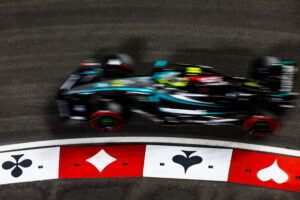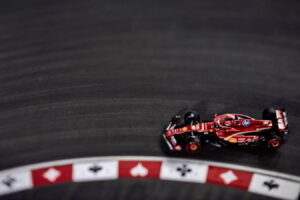For much of the 2020 NASCAR Cup Series season, one of the biggest criticisms levied at the high-downforce package was that it made passing the leader a Herculean task. I, myself, pointed this out many different times, this season.
Sunday, however, was the exception to the rule, on the run to the finish.
While Chase Elliott bested Denny Hamlin on the final restart, he didn’t pull away from the field, as the leader did all day. Instead, Hamlin kept close to Elliott, thanks to the large spoiler, which allowed him to draft up to the leader from the backstretch to the front chicane.
“They chose the right package for it; I’m pretty certain of that,” Hamlin said.
The package didn’t prevent lead gaps of multiple seconds. At one point, Elliott led the field by over 10 seconds. These large gaps were also present in the Gander RV & Outdoors Truck Series race, earlier that day, and Saturday’s XFINITY Series race.
Furthermore, six of the 13 lead changes in the Go Bowling 235 happened on-track, under green flag conditions.
“It seems like the good cars always find their way to the front,” Elliott said. “It might take them a little longer at certain tracks, but they tend to find their way back there whether we have an eight-inch spoiler or two-inch spoiler or no spoiler, so I’m just not sure that’s an excuse we need to use anymore.”
Before the season started, NASCAR announced that it would run the low-downforce package on the road course races. As has been the theme of the 2020 season, plans changed when the COVID-19 pandemic forced the relocation of the scheduled race at Watkins Glen International to the road course at Daytona International Speedway.
With the high speeds that cars reach at Daytona, NASCAR decided to run the high-downforce package for Sunday’s race.
“We don’t have the best brakes on these cars,” Hamlin said. “These are not six-piston brakes like you would like to have. But these things just — you’ve got to have something to slow us down, and that blade is probably the best thing for it because I think in the data it showed that we were going to be running 200 plus (mph) into Turn 1 and we don’t have enough brakes to slow these cars down.”
Regardless, this road course experiment is in the books and Elliott celebrates his third straight road course victory. Now, it’s off to the Monster Mile of Dover.






